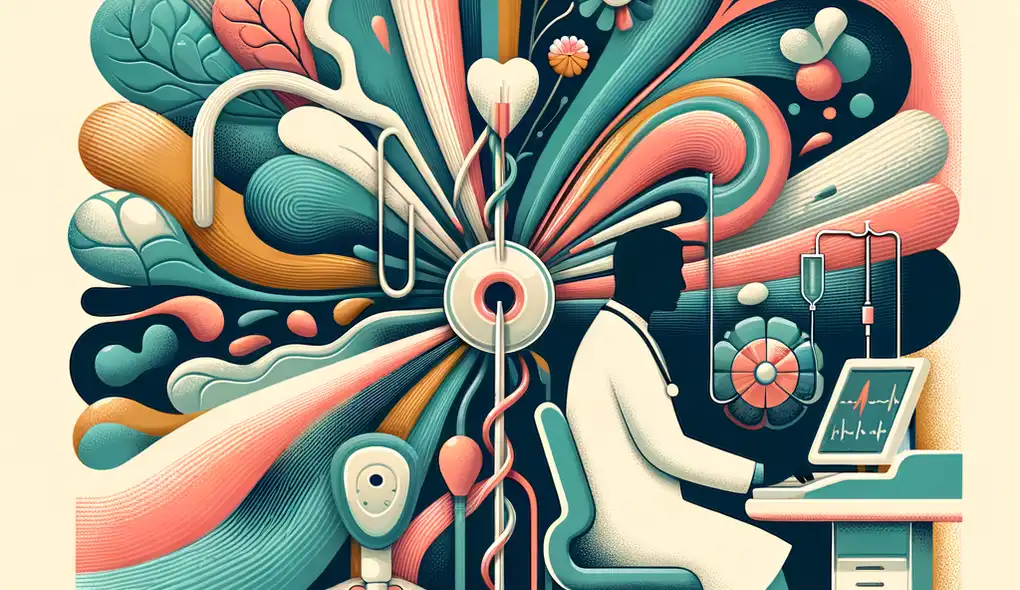Tell us about a time when you had to work collaboratively with a medical team to diagnose and treat a patient.
Interventional Radiologist Interview Questions
Sample answer to the question
One time, I had to work collaboratively with a medical team to diagnose and treat a patient who was experiencing severe abdominal pain. The team consisted of a surgeon, an anesthesiologist, and a radiology technician. We began by reviewing the patient's medical history and performing a physical examination. Based on our findings, we decided to perform a CT scan to get a better understanding of the patient's condition. The radiology technician operated the CT scanner while the surgeon and I analyzed the images. After careful examination, we identified a blocked bile duct as the cause of the abdominal pain. We then discussed the treatment options with the patient and recommended an endoscopic procedure to remove the blockage. The patient agreed to the procedure, and we successfully performed it the next day. Throughout the process, we maintained close communication with the patient and each other to ensure a smooth and effective treatment plan.
A more solid answer
One memorable experience of working collaboratively with a medical team to diagnose and treat a patient occurred during my time in a busy hospital setting. We received a patient with persistent shortness of breath and chest pain. The team, consisting of myself as the interventional radiologist, an emergency room physician, a cardiologist, and a respiratory therapist, quickly gathered for a multidisciplinary approach. We started by reviewing the patient's medical history and conducting a physical examination. The emergency room physician performed an initial assessment, ruling out any immediate life-threatening conditions. To further evaluate the patient, the cardiologist ordered an echocardiogram, while I recommended a CT angiogram to assess the pulmonary vasculature. We collaborated closely with the respiratory therapist to ensure the patient's comfort and safety during the imaging procedures. After analyzing the imaging results, we identified a pulmonary embolism as the underlying cause. The cardiologist prescribed anticoagulant therapy, and I performed a mechanical thrombectomy to remove the clot. Throughout the process, we maintained open and effective communication, discussing treatment plans and coordinating care for the patient. By working collaboratively and leveraging our respective expertise, we were able to provide timely and accurate diagnosis and treatment, ultimately improving the patient's condition and quality of life.
Why this is a more solid answer:
The solid answer expands on the basic answer by providing more specific details on the collaborative experience, including the role of each team member, the diagnostic process, and the communication with the patient. It also highlights the multidisciplinary approach and the successful outcome achieved through effective collaboration.
An exceptional answer
A remarkable experience working collaboratively with a medical team to diagnose and treat a critical patient highlights the importance of seamless teamwork in providing exceptional care. In this scenario, our team consisted of myself as the experienced interventional radiologist, a thoracic surgeon, an anesthesiologist, a critical care physician, and a team of dedicated nurses. The patient presented with severe abdominal pain and a history of trauma, necessitating immediate intervention. We wasted no time and initiated a thorough assessment. The thoracic surgeon coordinated the team, while I led the diagnostic aspect, ordering a series of imaging studies, including a CT scan with contrast, to assess potential internal injuries. The anesthesiologist ensured the patient's stability and comfort throughout the process. Together, we reviewed the imaging results and identified an active bleeding vessel within the liver. With the critical care physician's guidance, we developed a comprehensive treatment plan, which involved a minimally invasive arterial embolization procedure to stop the bleeding. During the procedure, the nursing team played a crucial role in monitoring the patient's vital signs and providing support. Thanks to our seamless collaboration and mutual trust, we successfully completed the procedure and stabilized the patient's condition. This case exemplified the effective teamwork required in emergency situations, where clear communication, swift decision-making, and synchronized efforts are essential to achieve optimal outcomes for the patients in our care.
Why this is an exceptional answer:
The exceptional answer goes above and beyond by providing even more specific details on the collaborative experience, including the specific role of each team member and their contributions to the diagnosis and treatment process. It also emphasizes the critical nature of the case and the importance of effective teamwork in emergency situations.
How to prepare for this question
- Familiarize yourself with the typical collaborative dynamics within a medical team.
- Review case studies or articles that highlight successful collaborative efforts in diagnosing and treating patients.
- Reflect on past experiences where you have worked effectively with a medical team to achieve positive patient outcomes.
- Consider the specific technical skills and medical knowledge required to collaborate in interventional radiology.
- Practice articulating your role and contributions in a collaborative medical team, emphasizing your ability to communicate and work well under pressure.
What interviewers are evaluating
- Collaboration
- Medical knowledge
- Diagnostic skills
- Communication
- Patient care
Related Interview Questions
More questions for Interventional Radiologist interviews